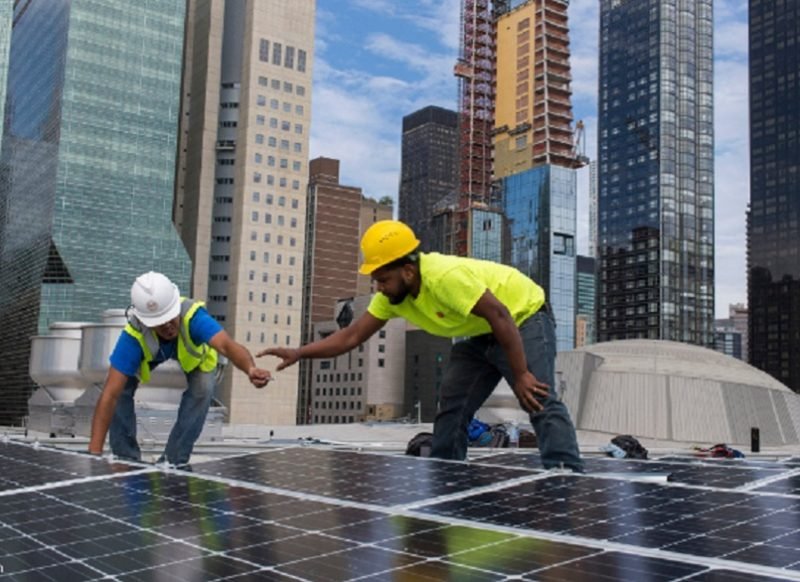India’s sunrise in the world of diplomacy: Promotion of solar power post COVID-19

Diplomacy is the art of the possible. The past few months that have engulfed the world with a heartbreaking pandemic, India has shown effective diplomacy by reigniting the spark in old relationships winning new friends, breaking new grounds, and shaping the outcomes in the international arena to promote the country’s enlightened national interests and development. The pandemic is poised to have significant geopolitical ramifications as the world’s two leading powers trade blame and pundits predict a retreat of globalization, it’s time for India to unscramble the jargon and introduce some balance in diplomatic discourse and the unfolding possibilities in the coming months. Prime Minister Narendra Modi’s pithy and eloquent vision is determined to push the envelope.
India, as a large democratic country, has multiple roles to play both globally and regionally with the motto “Sabka Saath Sabka Vikas” guiding India’s recent domestic as well as foreign policies. The practical manifestation of this was seen when India supplied critical medicines globally. India’s recent status of the lowest cost producer of solar power reflects an ongoing shift towards renewable power as the driver of global energy transformation. With the One Belt One Road initiative finishing off, India – Japan Cooperation based on sustainable financing and a common Buddhist connect will help nations and people across the world become empowered citizens, as it will create not only economic opportunities but also value-based system.
Worldwide renewable energy has established itself as the technology of choice and India’s solar story through its compelling business case is maximizing the falling renewable technology costs as the key to future energy decarbonization. It is cheaper to build and operate solar farms than to run the existing coal-fired power plants. India being the cheapest producer of solar energy is not a coincidence but a success story of the Private Public Partnership (PPP) model.
The specialized bodies formed by the Government of India like Ministry of New & Renewable Energy (MNRE) and subsequently the Solar Energy Corporation of India (SECI) have played a pivotal role in helping India become one of the fastest adopters of solar energy. The state governments have also contributed to the accelerated growth of the solar industry since electricity is a state subject. Karnataka & Tamil Nadu promote open access through concessional wheeling and banking facilities. This has made the two states the highest solar power generators in the country. Haryana & Uttar Pradesh are also following a similar policy framework to accelerate adoption in the commercial & industrial segment. With the COVID 19 pandemic accelerating globally, India can become a manufacturing state as many companies are pulling and are abound to pull out of China. Uttar Pradesh has already taken the lead and is inviting the CEOs to participate with enhanced infrastructure, better law and order amongst many other factors.

Today, solar energy has reached 30% of the 2022 target of the 100GW contributing 38% of the renewable energy mix. The numbers are a testament of the Government’s focused and positive response to solar developers leading to exponential growth. Due to the climatic condition of India with 240 – 300 sunny days in a year, the land is easily available for solar generation. Most draught prone areas in rural India are arid with high radiation and are viable for setting up large solar parks. India has the lowest cost of labour allowing solar industry to employ a large number of people resulting in speedy project completions. Comparatively, the cost of labour in the Middle East is five times higher than that in India. As a result of this, the solar industry has created ample jobs along with offering the lowest cost of power to the consumers. The primary reason for the Central Government to focus on renewable energy is that the construction of a solar plant requires only 20 – 30% high skilled manpower and the rest are semi-skilled or unskilled labour, accelerating economic growth by creating more jobs for such labour.
Since India is a high price-sensitive market, it has helped India in two ways. The first being availability of key components like solar panels, junction boxes etc. at competitive prices than other countries, helping India achieve lower solar tariffs. The second way is that, once the solar tariffs drop below the grid electricity tariffs, there has been a quick adoption resulting in further diving prices of the components.
In spite of the absence of uniform & stable policies and high cost of capital compared to other South Asian countries, the Indian solar market’s growth story is inspiring. Having said so, the country needs a National Solar Policy that will remove the bottlenecks at the state level and hasten adoption. In the coming years, energy storage will play a key role in making Renewable Energy a firm source of power and reducing the cost of electricity. India is poised to secure its renewable future as renewable energy has significant environmental benefits making it the single biggest driver to help us meet our carbon emission reduction targets in our fight against climate change.
With India being a growing economy, power consumption is only going to rise and adoption of alternate forms of energy is the ideal way forward to maintain a balance between the economic growth and sustainable environment. It is ancient wisdom and the reverence of the Sun that has been passed on from generation to generation which will power India both metaphorically and in real clean energy. India should continue to encourage investments into this sector while at the same time making stopgap arrangements to ensure in the present time, there are no power disruptions.




















